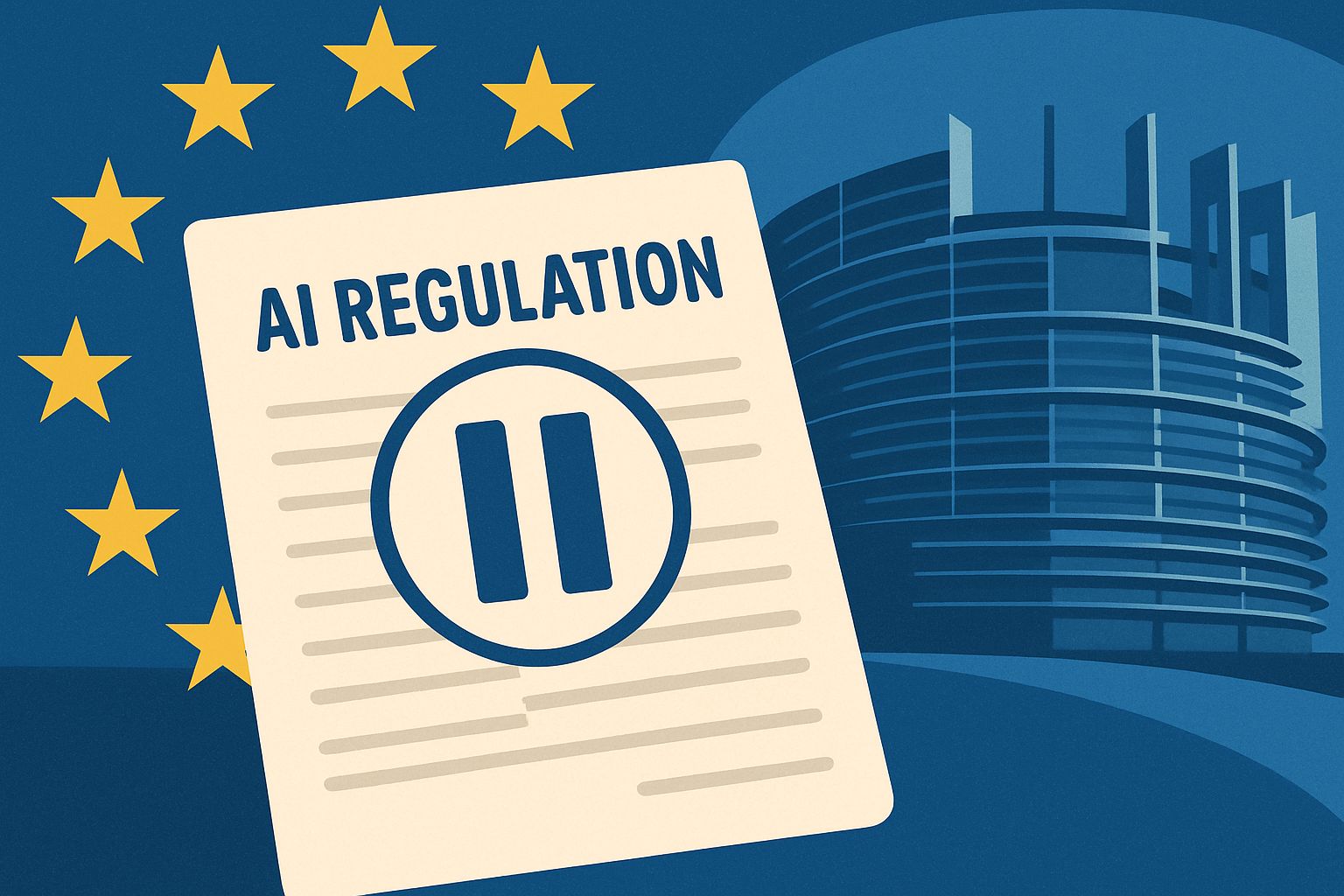
AI CERTS
2 months ago
EU Considers Pause in AI regulation
Pressure Mounts On Commission
Reuters revealed on 7 November that the Commission may delay targeted parts of the AI Act. Moreover, the proposal sits inside a broader Digital Omnibus package aimed at cutting red tape by 25 percent. Industry letters from forty-plus European CEOs demanded a two-year “clock-stop.” They warned that unclear standards raise costs and risk competitiveness. Meanwhile, United States diplomats, including Vice President JD Vance, urged Brussels to avoid “excessive” rules. Consequently, Commission spokesperson Thomas Regnier faces pressure to revisit his July statement that “there is no pause.” The unfolding scenario highlights how AI regulation can shift under coordinated influence.
Industry Lobbying Arguments Rise
Corporate coalitions present three main concerns. Firstly, general-purpose model obligations start in August 2025, yet harmonised standards are incomplete. Secondly, notified-body capacity for high-risk assessments appears limited. Thirdly, SMEs fear disproportionate administrative burdens. Additionally, signatories argue that a short delay could align the Act with evolving global AI governance frameworks. Key statistics illustrate the stakes:- Fines reach €35 million or 7 percent of global turnover for severe breaches.
- SME burden-reduction targets sit at 35 percent under the Omnibus goals.
- Lobbying spend by tech giants has climbed steadily, according to transparency registers.
Civil Groups Push Back
Civil-society organisations counter that postponement threatens hard-won protections. EDRi and Corporate Europe Observatory assert that vulnerable communities will pay the price. Moreover, they remind lawmakers that the Act emerged from three years of public consultation, reflecting broad EU policy goals. Consequently, watering down deadlines could erode trust in democratic rulemaking. Advocates add that transparency, human oversight, and ethical compliance safeguards are urgent. Additionally, they cite documented harms from biased recruitment and surveillance algorithms. In contrast, industry warnings about compliance costs, they argue, overlook societal costs. Nevertheless, some NGOs accept that guidance and capacity building are needed, suggesting focused funds rather than pauses. The pushback underscores a governance balancing act. Therefore, the Commission must reconcile economic and rights-based objectives.Digital Omnibus Explained Simply
The Digital Omnibus seeks to streamline overlapping reporting duties across data, cybersecurity, and AI governance laws. Henna Virkkunen describes it as “simplification without lowering standards.” Specifically, draft options include delaying certain high-risk obligations to August 2027 and trimming duplicate audit reports. Additionally, the package may propose a phased conformity assessment schedule tied to sector readiness. Furthermore, it could mandate Commission guidance on ethical compliance checkpoints. Consequently, companies might win breathing space while regulators keep strategic leverage. Professionals can enhance their expertise with the AI+ Policy Maker™ certification. Such training strengthens internal teams as EU policy evolves. These proposals illustrate a middle path. However, legislative mechanics still need Council and Parliament alignment before adoption.Geopolitical Stakes For Brussels
European lawmakers operate under intense diplomatic scrutiny. Moreover, Washington frames strict European AI regulation as a threat to innovation. Consequently, transatlantic trade talks increasingly feature algorithmic standards. In contrast, Brussels argues that rights protection and market competitiveness can coexist. Meanwhile, China advances its own AI governance model, stressing state oversight. Therefore, the EU sees strategic value in exporting a balanced framework grounded in ethical compliance. Any perceived retreat could diminish that normative power. Additionally, member states differ in appetite for delay, reflecting varied industrial bases. The geopolitical dimension raises the cost of missteps. Nevertheless, pragmatic cooperation remains possible through shared research and standards bodies.Implementation Timelines In Flux
The AI Act entered force in July 2024, with phased milestones:- Prohibitions on unacceptable-risk systems already apply.
- General-purpose model duties begin August 2025.
- High-risk obligations start August 2026.



